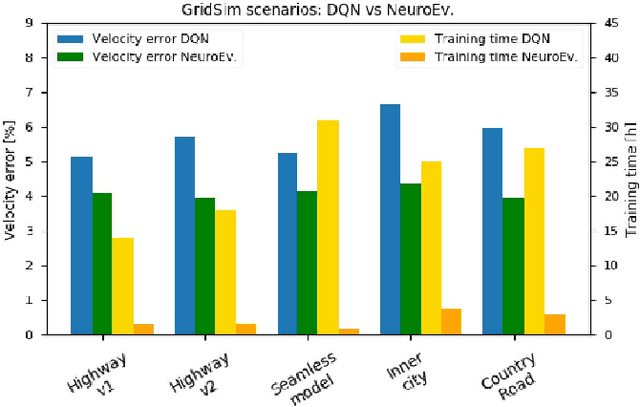GridSim: A Vehicle Kinematics Engine for Deep Neuroevolutionary Control in Autonomous Driving
Paper and Code
Jan 16, 2019


Current state of the art solutions in the control of an autonomous vehicle mainly use supervised end-to-end learning, or decoupled perception, planning and action pipelines. Another possible solution is deep reinforcement learning, but such a method requires that the agent interacts with its surroundings in a simulated environment. In this paper we introduce GridSim, which is an autonomous driving simulator engine running a car-like robot architecture to generate occupancy grids from simulated sensors. We use GridSim to study the performance of two deep learning approaches, deep reinforcement learning and driving behavioral learning through genetic algorithms. The deep network encodes the desired behavior in a two elements fitness function describing a maximum travel distance and a maximum forward speed, bounded to a specific interval. The algorithms are evaluated on simulated highways, curved roads and inner-city scenarios, all including different driving limitations.
 Add to Chrome
Add to Chrome Add to Firefox
Add to Firefox Add to Edge
Add to Edge